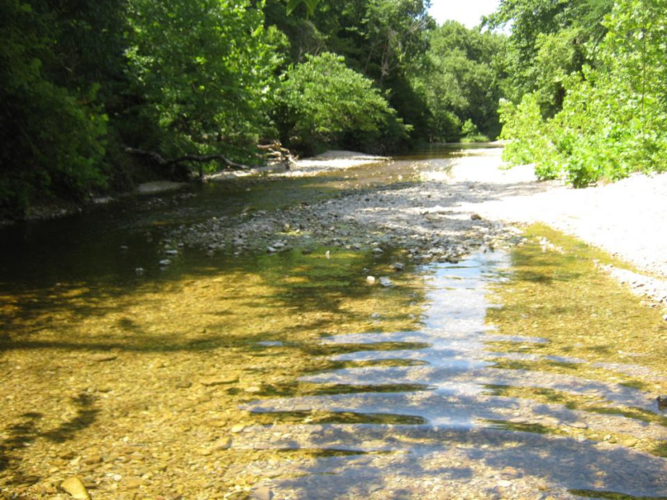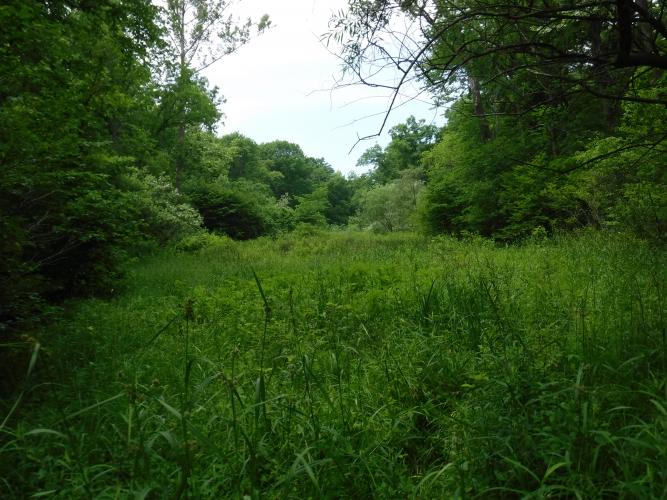Big Buffalo Creek Watershed is an outstanding example of healthy Ozark streams sustained by forest-woodland habitats. Abundant fish and wildlife reflect the largely unfragmented forest-woodland canopy and high-quality water system.
The watershed lies in Benton and Morgan counties, north of the Lake of the Ozarks, and contains 27,392 acres (42.80 sq. miles) and 148 miles of streams. The largest tract and majority of public land in the watershed is MDC’s Big Buffalo Creek Conservation Area (3,612 acres).
A successful landowner cooperative in the watershed currently manages over 2,000 acres for conservation. Through public and private partnerships, conservation efforts are increasing the health of the Big Buffalo Creek Watershed.
Contact our Sedalia Office to speak with a member of our dedicated team.
MDC staff can provide:
- Cost-share information
- Advice for sustainably growing and harvesting timber
- Guidance for timber sale administration
- Lists of contractors
- Step-by-step recommendations for improving wildlife habitat
Title
What Conservation Practices Could Benefit Me?
MDC's aim in priority geographies is to find common sense solutions to meet the goals of local landowners while balancing the needs of nature. MDC staff and partners will work with you to match your property goals with conservation practices that fit your needs. In the Big Buffalo Creek Watershed, these practices may include:
- Streambank stabilization and reinforced stream crossings
- Alternative livestock watering systems
- Tree and shrub planting
- Fencing to protect sensitive areas from livestock
- Timber stand improvement
- Invasive species removal or control
- Native grass and wildflower seeding
- Management plan preparation
Title
How Will The Area Benefit From Conservation Efforts?
- Healthier woodlands supporting quality trees and other plant species
- Removal of passage barriers (such as low-water crossings or "slabs") to allow aquatic invertebrates, fish, and sediments to move easily throughout the stream system
- Stable stream banks with reduced soil erosion and healthy riparian corridors (trees/shrubs/grasses bordering streams)
- Better quality and quantity of food and shelter supporting a variety of wildlife species
Title
What Species Will Be Helped?
While all species will benefit — including game animals — key species and species of greatest concern in the Big Buffalo Creek Watershed include:
- Birds: cerulean warbler, wild turkey, summer tanager, pileated woodpecker, whip-poor-will, wood thrush, Kentucky warbler, barred owl
- Amphibians: pickerel frog, Cope’s grey treefrog, spotted salamander, four-toed salamanderC, western slimy salamander
- Reptiles: prairie lizard, three-toed box turtle, broad-head skink, rough green snake, western wormsnake
- Mammals: white-tailed deer, red bat, southern flying squirrel, eastern chipmunk, eastern gray squirrel
- Insects: native bees, zebra swallowtail, giant swallowtail, forest ants, six-spotted tiger beetle
- Mussels: yellow sandshell, pink heelsplitter, threeridge
- Fish: plains topminnow, bleeding shiner, Ozark minnow, orangethroat darter, rainbow darter, sculpin, southern redbelly dace, creek chub
- Plants: Riddell’s goldenrod, Queen of the Prairie, scouring rush, oaks, hickories, ironwood, flowering dogwood, spicebush, native warm-season grasses, sedges, asters, legumes
C = species of conservation concern, * = state endangered, ** = federally endangered
































